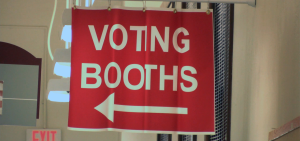News
Ohio elections officials are concerned that expired ID may thwart voters
By: Karen Kasler | Statehouse News Bureau
Posted on:
COLUMBUS, Ohio (Statehouse News Bureau) — Elections officials in Ohio, looking at results of the Aug. 8 special election, are concerned that the voter ID law that went into effect this year might result in more voters being turned away at the polls.

House Bill 458 passed last year and took effect in April, just before the May primary. The law spells out a number of forms of valid photo ID, including an unexpired Ohio driver’s license or state ID card, a U.S. passport or passport card, a U.S. military ID card. If a voter who does not have the proper ID casts a provisional ballot, that ballot cannot be counted.
Aaron Ockerman of the Ohio Association of Elections Officials said he is concerned that the new law might result in a higher number of voters being turned away or ballots being rejected.
“What we’re seeing, at least in some counties preliminarily, is that quite a few provisional ballots were rejected because a voter presented an expired driver’s license or an expired form of ID,” Ockerman said. “It’s really not even that we’re concerned about the ID law generally. It’s this very specific issue that we’re just kind of now starting to discover after this last election.”
Ockerman said elections officials want to study the data from the Aug. 8 special election to determine the best way to proceed before the Nov. 7 election, which will likely have higher turnout.
“The question we would then probably want to take back to the legislature is, ‘Is there a way that if we’re able to, if we identify a person and we know who they are beyond a question or beyond a doubt, then let’s get them voting a regular ballot, not voting a provisional ballot,” Ockerman said.
The law also requires mailed absentee ballots to arrive at county boards of elections four days after Election Day. Previously, they could arrive ten days after Election Day. For the August special election, 275,095 absentee ballots were sent to voters. To be counted, they must have been postmarked by Aug. 7, the day before Election Day.
Numbers from the vote tracker on the Ohio secretary of state’s website show 727,562 Ohioans cast ballots early for the August election, either by mail or in person. Unofficial results, issued on Election Day, show 19,703 of those absentee ballots were still listed as outstanding.
Unofficial results show 3,063,923 ballots were counted in the August special election, which adds up to 38.5% of Ohio’s registered voters. Most ballots were cast in person on election day. That number will increase as counties report valid provisional and absentee ballots.

